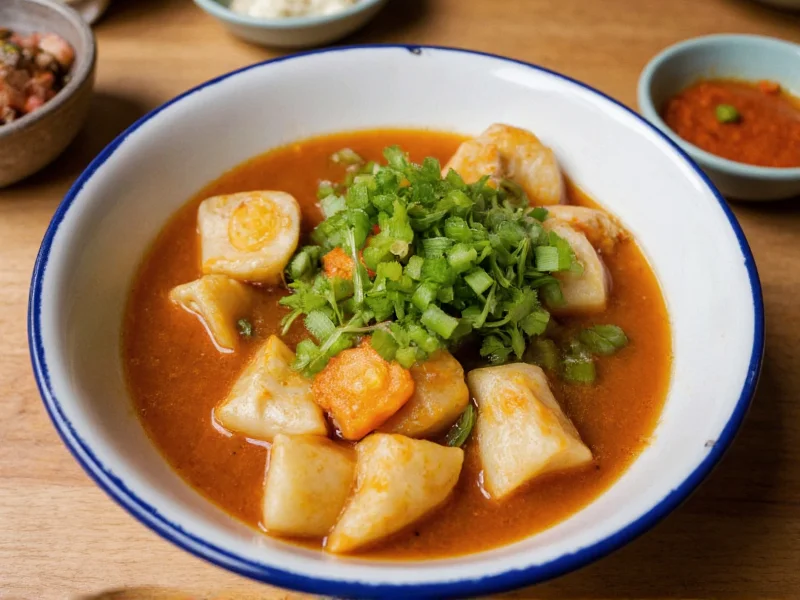As one of Thailand's most celebrated culinary exports, Tom Yum Goong represents the essence of Thai cuisine's flavor philosophy. The name translates to “sour shrimp soup” (“tom” = to boil, “yum” = spicy and sour, “goong” = shrimp), perfectly describing its preparation method and dominant taste profile. Unlike Western broths that develop flavor through long simmering, authentic Tom Yum Goong achieves its complex taste through the careful layering of fresh herbs and precise timing.
The Cultural Significance of Tom Yum Goong
Originating in Central Thailand along the Chao Phraya River basin, Tom Yum Goong has evolved from a simple riverfront meal to Thailand's national dish. Historically, Thai cuisine developed around balancing the five fundamental tastes—sweet, sour, salty, bitter, and spicy—with Tom Yum Goong exemplifying this philosophy. The soup gained international prominence in the 1980s as Thai restaurants spread globally, though many Western adaptations significantly alter the authentic flavor profile.
Essential Ingredients for Authentic Tom Yum Goong
The magic of Tom Yum Goong lies in its fresh ingredients, each contributing distinct flavor notes that create harmony when combined. Understanding these components is crucial for achieving restaurant-quality results at home.
| Core Ingredient | Authentic Function | Substitution Guidance |
|---|---|---|
| Lemongrass | Provides citrusy aroma and subtle lemon flavor | Use bottom third only; bruised not chopped |
| Kaffir Lime Leaves | Distinct floral-citrus fragrance | Never substitute with regular lime leaves |
| Galangal | Earthy, pine-like warmth (not ginger) | Available frozen; ginger creates different flavor |
| Fresh Bird's Eye Chilies | Intense heat with fruity notes | Adjust quantity based on heat preference |
| Fish Sauce | Saltiness and umami depth | Thai brands like Tiparos preferred |
Step-by-Step Authentic Tom Yum Goong Recipe
Creating genuine Tom Yum Goong requires attention to ingredient preparation and cooking sequence. Follow these steps for traditional results:
- Prepare the broth: Simmer 4 cups of clean shrimp stock (made from shells) with 2 stalks bruised lemongrass, 5 kaffir lime leaves, and 3 slices galangal for 10 minutes
- Add aromatics: Stir in 3-5 crushed bird's eye chilies and 1 tablespoon chopped shallots
- Cook shrimp: Add 12-15 medium shrimp (with shells for flavor) and simmer until just pink (2-3 minutes)
- Season: Remove from heat and stir in 2 tablespoons fish sauce, 3 tablespoons lime juice, and 1 teaspoon palm sugar
- Finish: Add fresh cilantro and a few cherry tomatoes just before serving
Crucially, the lime juice and fish sauce should be added off-heat to preserve their bright, complex flavors. Authentic Tom Yum Goong never contains coconut milk—that variation is Tom Kha Gai. The broth should remain clear, not creamy.
Tom Yum Goong vs. Tom Kha: Understanding the Difference
Many diners confuse these two popular Thai soups. The key distinctions:
- Broth base: Tom Yum uses clear broth; Tom Kha incorporates coconut milk
- Flavor profile: Tom Yum emphasizes sour-spicy notes; Tom Kha balances these with coconut's sweetness
- Primary protein: Tom Yum Goong features shrimp; Tom Kha typically uses chicken (Gai)
- Herb intensity: Tom Yum has more pronounced lemongrass and chili presence
Common Mistakes to Avoid When Making Tom Yum Goong
Even experienced home cooks make these errors that compromise authenticity:
- Using ginger instead of galangal – creates completely different flavor profile
- Overcooking the aromatics – boiling lemongrass and kaffir lime leaves too long makes them bitter
- Adding lime juice while boiling – destroys delicate citrus notes
- Using pre-made paste exclusively – fresh ingredients are essential for authentic taste
- Adding vegetables not in traditional recipe – mushrooms are optional; cabbage or carrots are not authentic
Nutritional Profile and Health Benefits
Tom Yum Goong offers surprising health advantages beyond its delicious taste. The traditional preparation creates a nutrient-dense broth with minimal calories. A standard serving (1.5 cups) contains approximately:
- 120-150 calories
- 15g protein from shrimp
- Negligible fat (without added oil)
- Rich in vitamin C from lime and fresh herbs
- Contains anti-inflammatory compounds from galangal and chilies
The capsaicin in chilies may boost metabolism, while galangal has demonstrated anti-nausea properties in clinical studies. Unlike creamy soups, authentic Tom Yum Goong provides bold flavor with minimal caloric density, making it a satisfying yet light meal option.
Serving Traditions and Pairings
In Thailand, Tom Yum Goong functions as both a standalone meal and part of a larger spread. Traditional serving practices include:
- Served piping hot in individual bowls with rice on the side
- Accompanied by sticky rice for balancing intense flavors
- Often paired with grilled fish or chicken dishes
- Never served as a starter—Thai meals don't follow Western course structure
- Chili flakes and additional lime wedges provided for customization
The ideal Tom Yum Goong experience involves adjusting the spice and sourness to personal preference at the table, reflecting Thai cuisine's emphasis on individualized flavor balance.











 浙公网安备
33010002000092号
浙公网安备
33010002000092号 浙B2-20120091-4
浙B2-20120091-4